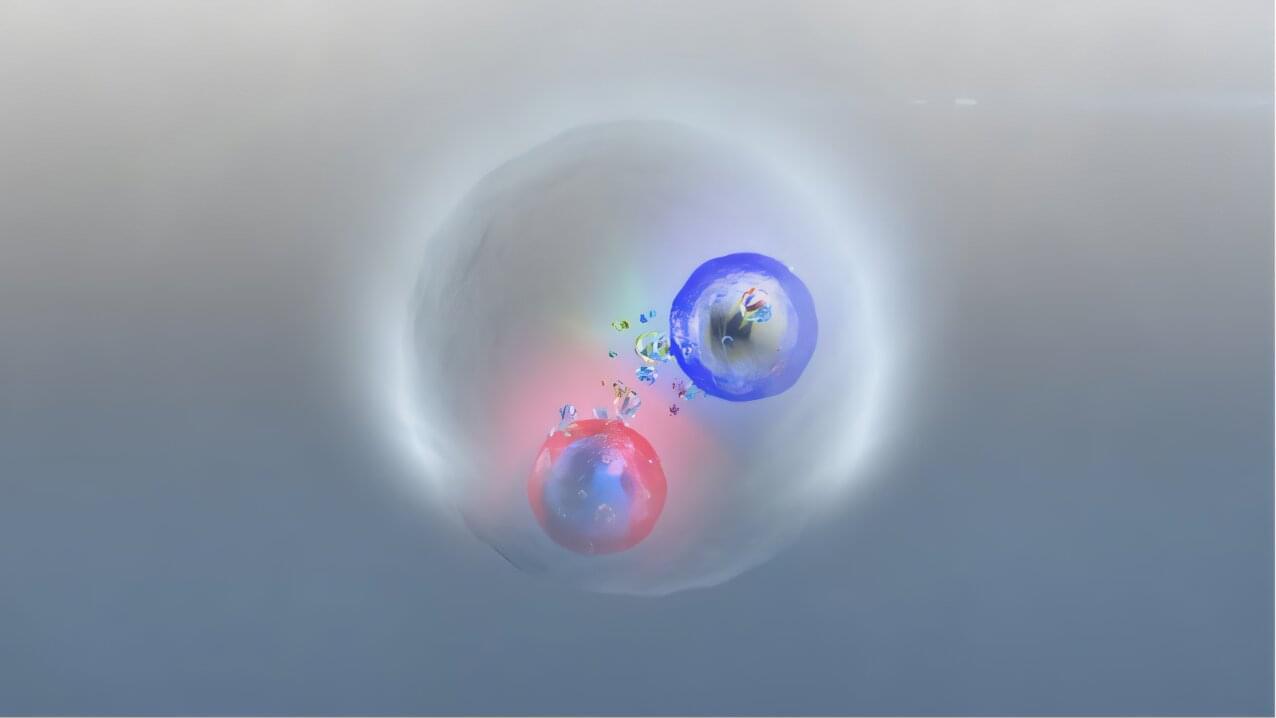An unforeseen feature in proton-proton collisions previously observed by the CMS experiment at CERN’s Large Hadron Collider (LHC) has now been confirmed by its sister experiment ATLAS.
The result, reported yesterday at the European Physical Society’s High-Energy Physics conference in Marseille, suggests that top quarks —the heaviest and shortest-lived of all the elementary particles—can momentarily pair up with their antimatter counterparts to produce a “quasi-bound-state” called toponium. Further input based on complex theoretical calculations of the strong nuclear force—called quantum chromodynamics (QCD)—will enable physicists to understand the true nature of this elusive dance.
High-energy collisions between protons at the LHC routinely produce top quark–antiquark pairs. Measuring the probability, or cross section, of this process is both an important test of the Standard Model of particle physics and a powerful way to search for the existence of new particles that are not described by the theory.
